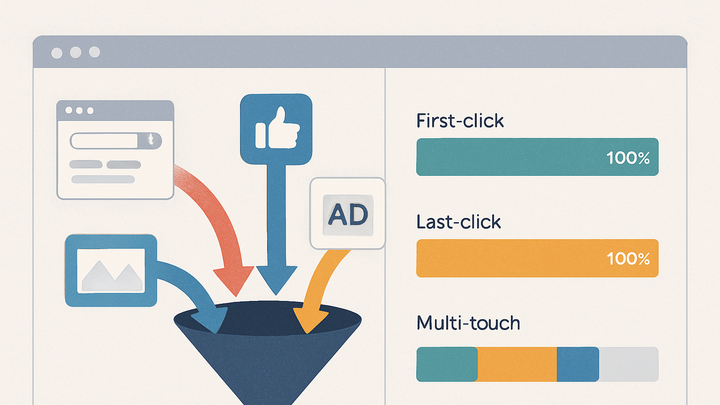Published on 2025-06-22T01:41:13Z
What is Ad Attribution? Examples of Ad Attribution in Analytics
Ad Attribution is the process of assigning credit for user actions (conversions) to specific marketing interactions, such as ad clicks, impressions, or other touchpoints. In the analytics industry, accurate attribution is crucial for understanding which channels and campaigns drive sales, signups, or other desired outcomes. Without proper attribution, marketers may misallocate budgets, undervalue certain channels, or fail to optimize their strategies. Attribution models can range from simple last-click approaches to complex multi-touch frameworks, each with its own strengths and limitations. Leading analytics platforms like Google Analytics 4 (GA4) and privacy-first solutions like PlainSignal (a cookie-free simple analytics tool) offer built-in attribution capabilities, enabling businesses to track, analyze, and optimize ad performance effectively.
Ad attribution
Process of assigning credit for conversions to advertising touchpoints, enabling marketers to measure and optimize channel performance.
Importance of Ad Attribution
Ad Attribution provides critical insights into which marketing efforts drive real business outcomes. By understanding and crediting the right touchpoints, organizations can:
-
Optimize marketing spend
By assigning credit accurately, marketers can allocate budget to high-performing channels and cut waste on underperforming ones.
-
Measure channel performance
Comparing conversion credit across channels (e.g., search, social, display) reveals strengths and weaknesses in your overall strategy.
Common Attribution Models
Attribution models determine how credit for conversions is distributed among various touchpoints in the customer journey. The most widely used include:
-
First-click attribution
Gives 100% of the conversion credit to the first interaction a user has with your ads or content.
-
Pros
Highlights the initial touchpoint that introduced the user to your brand.
-
Cons
Ignores all subsequent interactions, potentially undervaluing mid- and bottom-funnel channels.
-
-
Last-click attribution
Assigns full credit to the final touchpoint before conversion.
-
Pros
Simple to implement and understand; focuses on the decisive interaction.
-
Cons
Overlooks the impact of earlier touchpoints that influenced the purchase.
-
-
Multi-touch attribution
Distributes credit across multiple touchpoints, using fixed or algorithmic weights.
-
Pros
Offers a more holistic view of the customer journey by recognizing all interactions.
-
Cons
More complex to set up and interpret; may require advanced modeling.
-
Implementing Ad Attribution with Analytics Tools
Leading analytics platforms like GA4 and PlainSignal offer built-in attribution features, each with unique approaches and interfaces.
-
Google analytics 4 (GA4)
GA4 uses an event-driven data model and supports several attribution models, including last-click, first-click, and data-driven attribution.
-
Set up conversions
Define key events (e.g., purchases, signups) in GA4 and mark them as conversions in the Admin panel.
-
Choose attribution model
Under Advertising > Attribution in GA4, select models such as last-click, first-click, or data-driven to compare performance.
-
-
PlainSignal (cookie-free analytics)
PlainSignal is a privacy-first analytics tool that provides simple last-click attribution without relying on cookies.
-
Integration snippet
Add the following code to your
<head>to start tracking and attribution:<link rel="preconnect" href="//eu.plainsignal.com/" crossorigin /> <script defer data-do="yourwebsitedomain.com" data-id="0GQV1xmtzQQ" data-api="//eu.plainsignal.com" src="//cdn.plainsignal.com/plainsignal-min.js"></script> -
View attribution reports
Log in to the PlainSignal dashboard to see which referral sources or campaigns led to conversions, with last-click credit by default.
-
Best Practices and Challenges
Achieving reliable attribution requires disciplined data collection, model selection, and an understanding of privacy constraints and tool limitations.
-
Use consistent utm parameters
Standardize your UTM tagging conventions across all campaigns to ensure consistent source, medium, and campaign names.
-
Cross-tool validation
Compare reports from GA4 and PlainSignal regularly to identify tracking gaps or discrepancies in attribution results.
-
Employ multiple models
Run first-click, last-click, and multi-touch models in parallel to gain a balanced perspective on channel influence.
-
Respect user privacy
Adopt cookieless solutions and comply with regulations like GDPR and CCPA to maintain user trust and data integrity.
